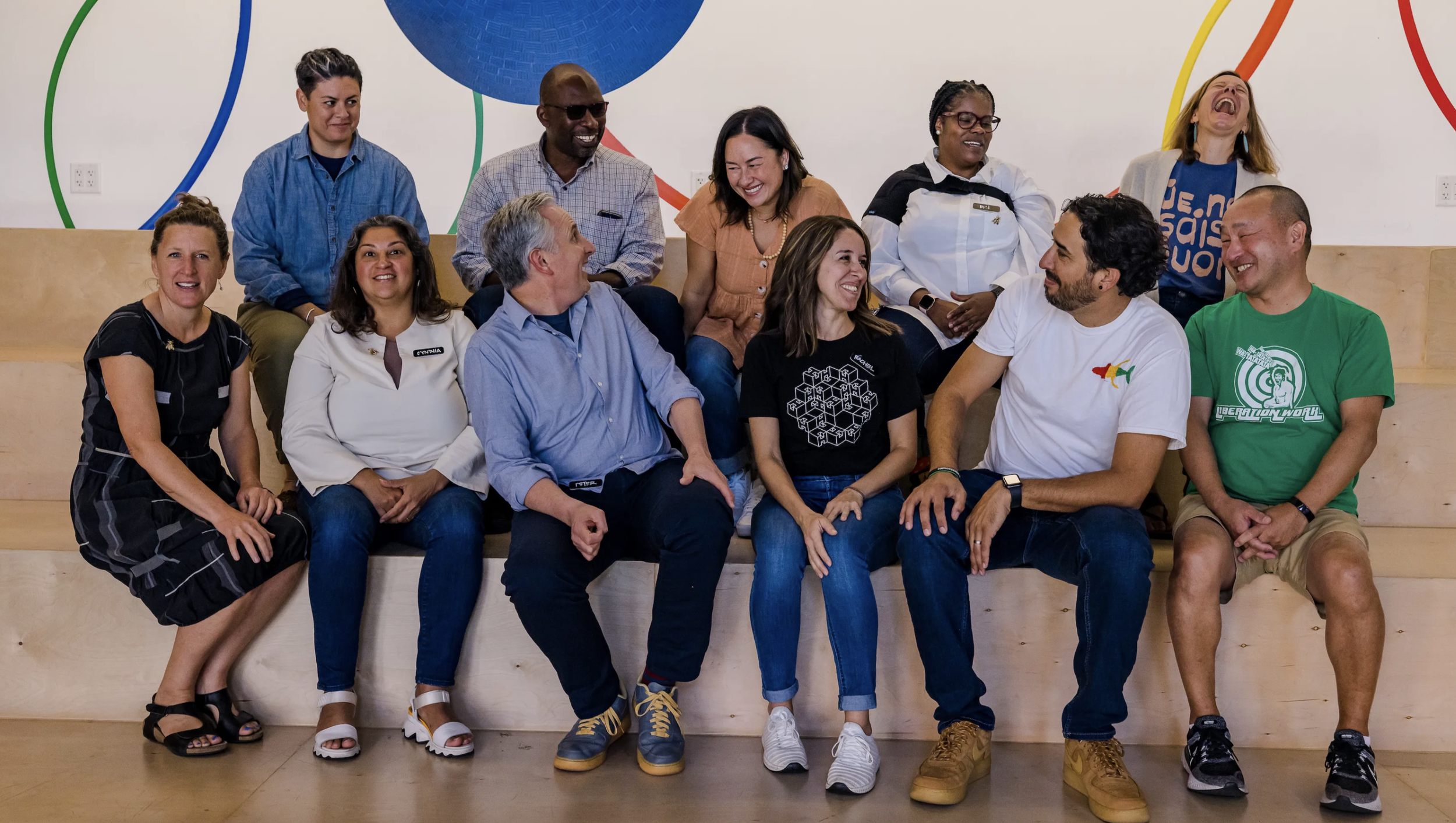
DESIGN X EMERGENCE INTERSECTION- DESIGN PRINCIPLES, COMMUNITY BUILDING
Design for Emergence (D4E) is a collaborative of designers and systems leaders that helps people solve complex problems using liberatory design, emergent strategy and embodied leadership.
Designing, Scavenger Hunting, Magic Making
Design for Emergence Retreat in Oakland, CA
Design for Emergence (D4E) is a collaborative of designers and systems leaders that helps people solve complex problems using liberatory design, emergent strategy and embodied leadership. This BIPOC-led collaborative hosted its first retreat October 19–21, 2022. D4E Hive members traveled from as far away as Northern Ireland, to convene in Oakland, California where we gathered, learned, and co-designed. Here are the anchors of our immersive, transformative experience:
Purpose: To answer the question of why D4E exists in the world
Foundations: To identify the values, behaviors and D4E Pillars we care about
Presence: To access internal states of abundance and present-moment awareness
Future: To imagine possible Hive projects and to co-design a current D4E project
Past: To appreciate and honor our past contributions to the work of strategic design with assets such as School Retool, The Co-designing School Toolkit and Design for Belonging
Gather.
“Every gathering is an opportunity to create a world we wish existed.” — Priya Parker
During our time together, a sense of opportunity and transformation was palpable. Each of us arrived curious, somewhat guarded, perhaps craving connection, while also fearing disappointment. What we were trying to do was impossible and imaginable at the same time. We were ready and not. Together, we read Shedding Skin by Harryette Mullen and begin “blinking off old eyelids for a new way of seeing.”
As our immersive experience unfolded, through framing and facilitation, each of us was able to tap into our humanity and grow into a sense of belonging within the collective. Scavenger Hunt. Improv. Learning exhibitions. Context building. Small group problem-solving. Large group discussions. Opportunity mapping. As we moved through the learning, we found ourselves in meaningful moments that became embodied. Our physical beings became more expansive in movement and our inner beings opened into new spaces enriched by collective wisdom, lived experience, and deep identities.
Learn.
“We have learned that such a fundamental shift requires many small steps — having massive visions and making them attainable with specific goals that can be measured and felt both internally and by those who participate in the network and in our trainings.”
– adrienne maree brown
Engaging in the process of systems change is complex and ambiguous work. To be effective, this work must involve diverse perspectives so that we might see the system itself more clearly. This is one of the reasons why we believe in democratizing design and imagination as a lever for systems change. We need a range of perspectives to inform how we might create social equity and belonging.
To open ourselves up to new ways of seeing and make tangible what lies within complexity requires collective vulnerability. In turn, this vulnerability can serve as a space of freedom and learning. We discover this as we work through individual moments of emotional insecurity toward world-opening lessons. Shifts arise as each of us shares insights from our individual learning, both professional and personal.
We witness our collective creativity and imagination as we engage in improv. We learn the inner lexicon within the group as we set context. We learn that one of us writes one new poem every day while another of us studies internal physical perception through movement. We learn that one of us is a joy-maker and another of us is a praxis engineer. We are readers and writers. We make meaning and magic. We believe in the power of liberatory design and work for systems change. Together, we create the map that brings us together as Design for Emergence.
On our road toward convivir, we realize our ability to embody as a team the world we want for ourselves in life and work. We gain confidence in our ability to take steps to design the conditions for the states of being and ways of working that we want to experience in the world. Ontological design becomes a part of our new way of seeing and we start building.
Co-Design.
“Emergence is the way complex systems and patterns arise out of a multiplicity of relatively simple interactions.” — Nick Obolensky
Research suggests that sitting side by side while driving is one of the best places to have a difficult conversation that requires honesty. In the world that Design for Emergence wants to help build, people sit side by side to shift power dynamics within systems as they co-create new systems where equity and belonging are norms rather than ideals.
Sitting side by side in Oakland, our reason for being as an organization grew more and more evident, even its emergent state. Standing together side by side, we began to manifest our reason for being by co-designing prototypes of tools to change systems. Tools to engage people in a new way of seeing so that we might engage in new ways of being and working. Tools for transformation, not transactions. A multiplicity of tools, simple enough to use but with the potential to help us design the world we wish existed.
At the end of the process, we generated a list of prospective projects we hope to launch moving forward. Some are moonshots and some are already in development. Topics include:
Cities of Belonging — civic redesign projects
Learning Journeys — for systems change + healing leadership development
Transformational Play + Embodied Healing — movement for equity + justice
Climate Change Crisis — summits for local actions
Equal Justice Initiative — a moonshot partner
As we develop projects, we will use a nested design framework and build for immersion and embodiment. In all of our work with clients and partners, our goal is to shift mindsets in order to shift behavior.
Coda.
“…How do it free us?” — Sonia Sanchez
At the end of our time together in Oakland, we had a clear sense of the creative alchemy within the Design for Emergence team and the work we want to do in the world. But knowing that the learning happens in the debrief, we recognized that important lessons were still in front of us.
What we do know now is what it took to get us to this point and what we had to let go of as a part of that process. As a part of our own liberatory design practice, these realizations will inform our efforts to help design new ways of seeing and new ways of working in the world. We know this will require experimentation, collaboration, and shared purpose.
We also hope to apply what we have learned and what we are learning to design systems, metrics, and rituals that support our clients and partners in their efforts to change systems. Our first step toward this goal was to run an internal design sprint to explore how we might use power mapping to change systems. Now, with several prototypes in hand, we hope to design immersive learning journeys that engage people who are working in systems change.
Here’s the thing. At Design for Emergence we believe that we are all protagonists in systems change work. And we want to build critical connections with you. Adaptive and intentional.


